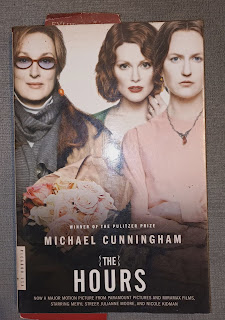My mother’s first cell phone was a 2000 Nokia 5210. Since she got used to this model, she wouldn’t leave the house without it. And since one son and one daughter are OFWs, her 5210 became her best loved gadget. But last week, the messages on her screen blinked and the letters disappeared at will. There had been many battery and LCD replacements and repairs in the past, but this time, both these solutions failed to work. We finally convinced her to retire the 5210.
Buying the next simplest gadget, an 1100 model, was a quick decision. Just to make sure that my mother wasn’t deprived, we took her to the mall in her wheelchair and let her touch and feel the latest models. She was not interested in all the other models because she won’t use their other features anyway. She just wanted to text and call and would rather store pictures in an album. So she chose this inexpensive and easy to use 1100 with an assurance from us that it works exactly as the old one.
The first time she held her new phone, she was disoriented. She liked the light weight but not the very small screen. Due to her pride, she did not ask us at first how she could
text and receive messages using short cut keys. Instead, she consulted the Tagalog Manual for Users, because it was in Tagalog.
After about some seconds of landing on the page about batteries, she read aloud:
”Impormasyon Tungkol sa Baterya
Pagkakarga at Pagdidiskarga
Ang inyong telepono ay pinatatakbo ng isang bateryang muling nakakargahan.”
”Tandaan na ang ganap na pagganap ng isang bagong baterya ay nakakamit lamang pagkaraan ng dalawa o tatlong kumpletong pag-inog ng pagkakarga at pagdiskarga!”
“Ano raw?” My mother asked.
For her, the phrases “ganap na pagganap” (fully charged? maximum performance?) and “kumpletong pag-inog ng pagkakarga at pagdiskarga” (complete round of charging and discharging?) sounded funny and Greek. She asked “Ano Raw?” (What does it
say?) three times, and finally, she put the manual down, swallowed her pride, and in exasperation asked me to just teach her how to use the new cell phone.
I translated and explained back into English some confusing Tagalog in the Manual, hoping that my back translation was correct. My mother had only six years of elementary education (after the Japanese occupation of 1942-1945). While today she prefers to read everything in Tagalog, not all technical vocabulary will communicate to her if translated in pure or formal Tagalog. Shed rather be told,
“I-charge nang husto ang baterya, hanggang mapuno at apat na bar na ang nasa kanan ng iyong screen. Tapos na ang pagcha-charge pagkalipas ng dalawang oras." [Charge the
battery until you see four bars on the right of your screen monitor. Charging the battery is finished after two hours.]
That is, if that’s what the Tagalog “Greek” text is actually saying. Note the switch coding I-charge instead of kargahan and the use of Tag-lish “pagcha-charge” instead of pagkakarga.
Instances like this make me think about who really uses Tagalog. Most Filipinos understand English, but those who find English difficult will not understand a Tagalog translation that has failed to appreciate how a Tagalog speaker and non-English user uses and speaks the language.
Monday, June 19, 2006
Subscribe to:
Post Comments (Atom)
“The Hours” by Michael Cunningham: Time, Identity, and the Echo of Virginia Woolf
When I first read The Hours , I didn’t know a novel could hold so many worlds in a single breath. Michael Cunningham’s Pulitzer-winning b...

-
[ Filipiniana Book Shelf series focuses on books on the PAWR library - that is, bought books that have been read and are being re-read jus...
-
When I first read The Hours , I didn’t know a novel could hold so many worlds in a single breath. Michael Cunningham’s Pulitzer-winning b...


hello ulit, ate jophen.
ReplyDeletenakalimutan ko kung ano ang email mo e, kaya dito ko na lang ilalagay ang blog address ko. =) when in doubt, i'm linked at beng's page. =)
merilionsarrow.blogspot.com
email: butchpang@omflit.com and merilion@gmail.com